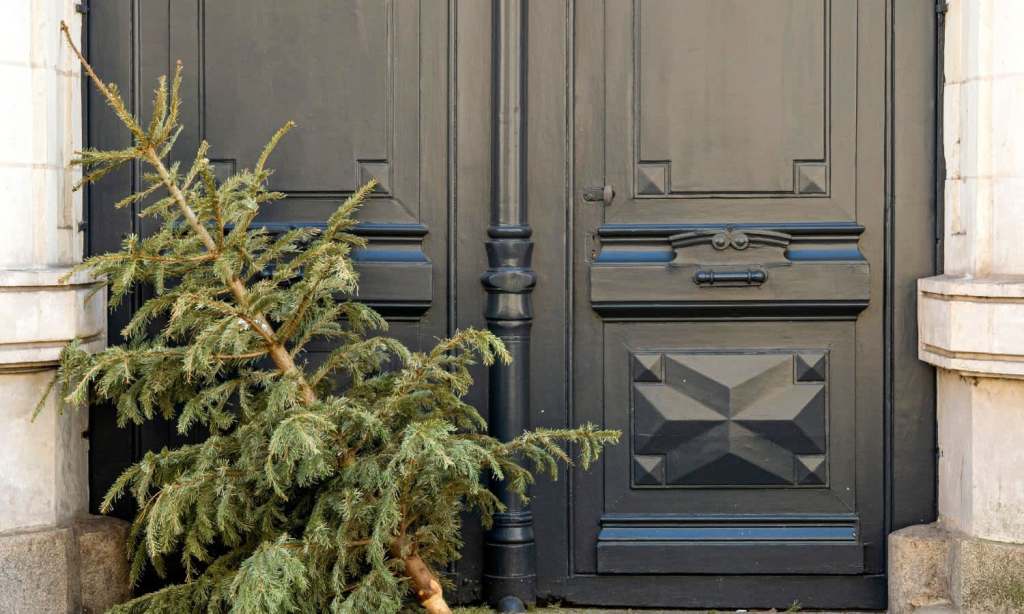Now that Christmas is done and dusted for the year, it’s time to think about taking down that tree and putting away your decorations. But, unlike the excitement you likely felt setting it all up, you’re now probably feeling a tad overwhelmed. Or unsure about the best way to go about doing so.
If your tree is real, how do you properly dispose of it? If it’s not, what’s the best way to store it? And, importantly, when even is the best time to take it down? We answer all those questions and more here.
When Should You Take Down Your Christmas Tree?
Traditionally, Christmas trees are typically taken down on January 5 or 6, the 12th day of Christmas. “According to Christian tradition, January 6 marks the day the three kings actually arrived in Bethlehem and signals the end of the Christmas celebrations,” reads US publication Southern Living.
Some say that taking the tree down earlier is bad luck — though, others say taking it down any later than January 5 or 6 is bad luck, too.
So, the final verdict on when to take down your tree? If you’re still on leave that first week of January, it might be best to spend an afternoon or evening doing so. If not, aim for that first weekend. Crank up some tunes (Christmas ones, even!), and aim to get it all cleared away in one go.
What’s the Best Way to Recycle Your Christmas Tree?
So, now that you know when to get rid of your tree, how do you go about doing it? Well, most local councils in Australia offer a free Christmas tree collection which will see them turn it into mulch or use it for mine site rehabilitation. Google your council’s contact details and give them a call to find out whether they have a designated collection day, or whether they’ll come to pick yours up specifically.
As for whether it can go in the green waste bin, in most local councils it can, provided it’s been cut up into 30-centimetre lengths with branches and trunk no thicker than 10cm. Again, though, it’s best to call your local council to find out their rules.
Other options include turning it into mulch with a shredder or chipper, or cutting off and then drying the branches out to use them for next year. On that note, there are countless other arts and crafts projects you can do using an old tree, including turning it into potpourri, creating a bird feeder or making a rustic candle holder for your home.
What’s the Best Way to Store Your Christmas Tree?
How best to store your Christmas tree depends on what type you have. If you have an artificial tree, it likely came in a canvas bag that you can use to repack it into. While placing it horizontally in storage is easiest, vertical storage saves floor space.
If your tree didn’t come with a bag, though, and instead came in a cardboard box, you could consider storing it in there. Or, buying a plastic container that’s big enough to hold in the tree parts from Bunnings, IKEA or even Woolworths.
Can You Recycle Your Christmas Lights?
Generally speaking, most Christmas decorations aren’t recyclable. Christmas fairy lights, in particular, definitely can’t go in the recycling bin because they’re electronic, not to mention that because they’re long and stringy, they’re likely to get caught in the conveyor belts at recycling stations.
If you want to dispose of Christmas lights, book a pick-up with your local council, or, if you can’t wait, throw them in the red bin. Also, it’s worth mentioning that most Christmas lights are battery-operated so if you just buy new batteries you can extend their life for a few more years.
What’s the Best Way to Store Your Christmas Lights?
As mentioned, Christmas lights can be long and stringy, taking hours to untangle. So, if you’re looking to store them without the future pain of untangling, grab a piece of cardboard or a clothes hanger and wrap the lights around it. Paper towels or wrapping paper tubes (the latter of which you might have laying around post-Christmas) also work as bases for you to wrap your Christmas lights around.
Once properly wrapped, place the lights in the same plastic container you’re using for the tree if you’re using one. Or place them in a linen or storage cabinet. If they’re wrapped around a hanger, you can even hang them in a spare closet.
Read more stories from The Latch and subscribe to our email newsletter.

